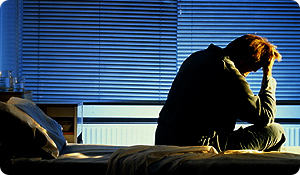
Night pain affects about one in three adults. It's the number one cause of disturbed sleep and puts a real damper on your after-work activities. Fortunately, there are several ways to suppress night pain, which will help you get those 40 winks you desperately need. While you can easily implement some of these relief methods at home, for others, you should consult your doctor.
1. Revise your medications.
An inadequate pain medication routine can exacerbate night pain. For instance, a British study showed that a combination of two drugs, indomethacin (Indocin®) and diazepam (Valium®), was more effective at controlling night pain and improving morning stiffness for people suffering from rheumatoid arthritis. Double-dosing is another option. Talk to your doctor about these options and possible side effects, such as addiction.
2. Exercise.
Several studies show that exercise takes the edge off pain caused by conditions such as rheumatoid arthritis, osteoarthritis, fibromyalgia, and lupus. Stretching, strengthening and low-impact aerobic exercises increase pain tolerance, and strengthen and relax muscles and joint tissues to alleviate aches. If you do exercises late in the day to relieve night pain complete them at least three hours before bedtime.
3. Warm up.
According to the American Pain Society (APS), several recent studies indicate that heat can effectively reduce acute low back wrist and neck pain. However, for the best relief of night pain, you should use continuous, low-level, or long-term heat such as a heat wrap, which can be worn during the day, or when you're exercising or sleeping.
4. Take a melatonin supplement.
Doctors commonly prescribe a melatonin supplement to treat depression, but it's also a popular natural sleep aid. It improves sleep quality and mental alertness and offsets the long-term and short-term side effects of sleeplessness. Melatonin may also directly relieve some causes of night pain. In recent studies, melatonin has been beneficial in treating cluster headaches and migraines.
5. Ask about a nerve block.
If you have complex regional pain syndrome (CRPS), phantom limb pain, or scleroderma, you may be a candidate for a nerve block, which could help night pain. Nerve blocks are injections into a vein or nerve that provide relief. For instance, the National Pain Foundation indicates an injection into a vein in the arm, or a shot in the base of the neck (a stellate ganglion block) can reduce arm pain. A lumbar sympathetic nerve block can relieve leg pain.
6. Get a massage.
Massages are relaxing and soothing, but they also reduce pain perception and hyperalgesia, which is a heightened sensitivity to pain, according to a study in the Journal of Pain. A massage may help you if you have cancer, low back or neck pain, and arthritis. By the way, you don't need someone else for a massage to soothe night pain; use a massage chair, massage mattress or bed, or hand-held massage tools.
7. Control underlying causes.
According to a 1996 Gallup Poll, for 30 percent of people with night pain, arthritis pain is to blame. This percentage increases to 60 percent for the over-50 crowd. To make your nights less painful, consult with a doctor to address the underlying causes. Also, try as much as possible to stick to your treatment plan, or you may still find relief is elusive.
8. De-stress.
Chronic stress not only makes pain worse, it causes it. The Cleveland Clinic recommends these psychological treatments to reduce high levels of stress that can aggravate night pain- talk therapy, relaxation training, stress management and pain coping skills.
9. Change your bedding.
If night pain interferes with your sleep, consider changing your mattress and pillow. A firm mattress can relieve lower back pain, and a cervical or memory pillow is useful for treating neck pain.
10. Meditate.
A University of Montreal pain management study found that people who practice Zen meditation had lower sensitivity to pain. They were also able to slow their breathing, which possibly influences sensation by keeping the body relaxed. To learn more about meditation and yoga for pain control pick up a copy of the Mayo Clinic Wellness Solution for Back Pain.
Sources:
The National Pain Foundation, American Pain Society, The Cleveland Clinic, The American Association of Family Physicians, University of Montreal press release
Journal: The Journal of Pain, 9(8):714-21
Date August 2008
Name: Massage reduces pain perception and hyperalgesia in experimental muscle pain: a randomized, controlled trial.
Website: http://www.ncbi.nlm.nih.gov/pubmed/18455480
Authors: Frey Law LA, Evans S, Knudtson J, Nus S, Scholl K, Sluka KA





